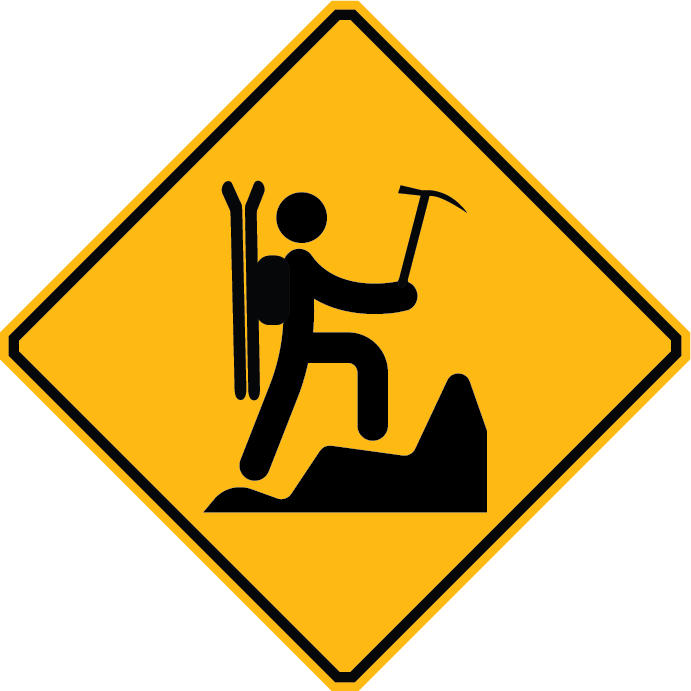Mount Logan’s Wolverine Cirque. Photo: Rob Writz
There have not been many revisions to the way we present information on this website. Since launching ten years ago, the major change was in 2017 when we adjusted the page formats and added the logo. Additionally, we haven’t added much content since 2018 as publishing efforts for several of the following years were focused on the Berthoud Pass guidebook, Loveland Pass map, Loveland Pass guidebook, and Berthoud Pass reprint. During this time we have built up a sizable backlog of spring ski mountaineering peaks and routes to the website. We have been climbing ridges, skiing routes, and re-visiting zones to make sure that we obtain authentic experiences with these mountains before publishing on the website. As a result of this backlog, we are now proceeding to publish more pages onto the site.
This creates an opportunity to clean up the way we present information and adjust the maps. Below we give an overview of some of the changes and additions you will see on the website. These changes may not appear rapidly as this is a free website that is a labor of love. You may find pages that present information when first published in 2014. Hopefully, and over time, we will update these legacy pages to the new formats. On net new mountains we will be making minor changes like those found on Mount Logan and Rosalie Peak pages. These are new to the website during spring 2024. The changes are described below.
Resources - How to Use this Site
On this legacy page we describe how to use the information presented on the ski mountaineering pages. Included are the historic links to Lou Dawson’s website for understanding descent ratings including route commitment, difficulty, risk, and aid rating. We are adding average slope angle and steepest slope angle as additional information for your planning as it is hard to extract this information from the old ‘D System’. We estimate the spring ski descent’s average angle and steepest angle based on our experience as well as using Caltopo. Tools such as Caltopo were not as robust 10 years ago, but now are super useful planning tools.
Avalanche Terrain Exposure Scale
Front Range Ski Mountaineering became aware of the Avalanche Terrain Exposure Scale (ATES) when we started collaborating with Beacon Guidebooks for the publication of our Berthoud Pass and Loveland Pass guidebooks. ATES is a planning tool that was designed and developed extensively by Parks Canada as a way to help snow travelers understand the risks that inherently come with travel in avalanche terrain. It is a system of rating backcountry terrain based on exposure to potential avalanches when in that terrain. We highly recommend reviewing the ATES system and incorporating it into your planning.
The updated 2.0 ATES scale (2023) divides terrain into five categories: non-avalanche, simple, challenging, complex, and extreme. An excellent ATES overview, including descriptions of the categories, is described on Beacon’s website. We apply ATES in the spring ski mountaineering route description to aid in thinking about exposure to avalanche terrain, and to consider how to minimize risk. We may also reference ATES in the approach description as even the ways in and out of a trip can be exposed to avalanche hazards. Over time, we will be incorporating ATES into the winter backcountry descriptions.
Getting Rid of Green, Blue, and Black
Our legacy spring ski mountaineering pictures and maps use blue lines and squares to show the approaches and routes. Starting the spring of 2024 we are eliminating any visual reference to ski area symbology on net new pages. This includes the blue lines and blue squares on the ski mountaineering pictures, as well as the green circles, blue squares, and black diamonds on the winter backcountry pages. We think that any association with ski area colors is confusing because ski resort difficulty does not translate to backcountry travel. The photo symbology going forward is best seen on new pages such as Mount Logan and Rosalie Peak. The route photos remain in black and white, but the route line is a dashed black line, and the route symbol is a yellow square. It will take quite some time for us to go back and make these route symbol fixes on the legacy pages. This Fall we hope to edit the winter backcountry ski pages and remove any visual and text reference to green, blue, and black lines and symbols. We will substitute the visual depiction of difficulty with route text descriptions and ATES.
New Maps
Our new map is in Caltopo. We are consolidating all ski mountaineering maps, previously on Google maps, to one master Front Range Skimo map in Caltopo. This will be a change that you will see sooner than later. First starting with new peaks, and then replacing legacy page maps. This map is accessed similar to the past by clicking on the image and going to the Caltopo site. You will need to zoom into your desired area. These maps will show approaches and ascents with arrow lines, and ski descents and mountaineering ascents in dashed lines. We will not delineate routes by difficulty on the maps. Legacy Google maps will persist until we are able to replace them, and we anticipate changing out the legacy maps before the legacy photos. You may find some ski mountaineering pages that have legacy photos, but link to the new Caltopo map.
Rosalie Peak’s Tanglewood Bowl. Photo: Rob Writz


